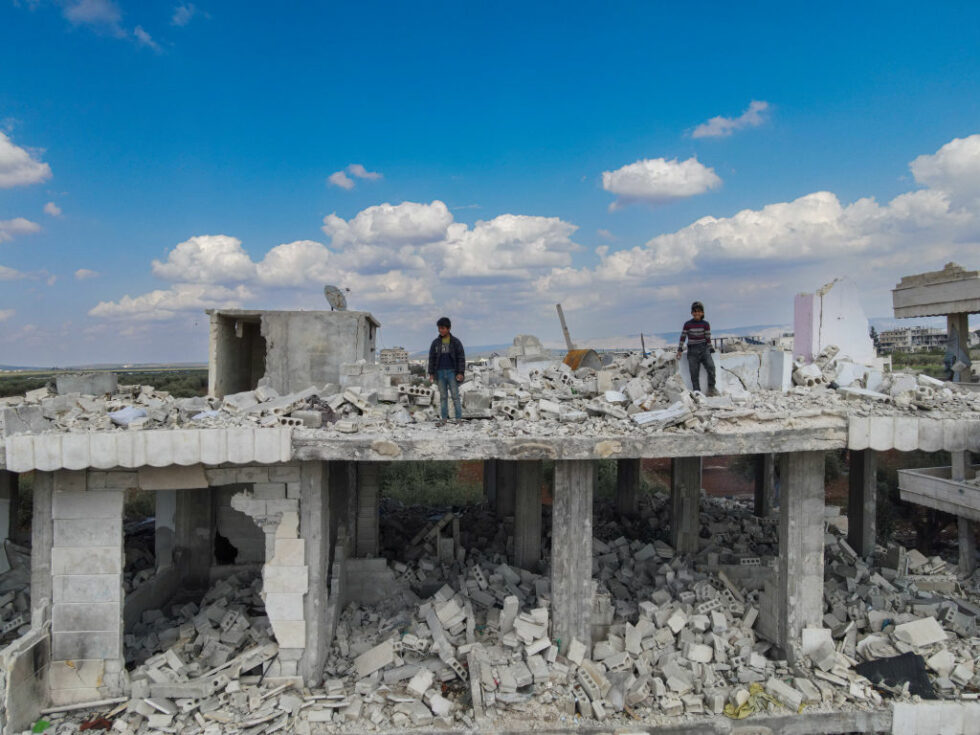
The Rubble King
President Bashar al-Assad is demolishing opposition neighbourhoods in order to create a shiny new Syria – one in which dissent never existed – and reward his cronies with the spoils
The Syrian military is flattening entire neighbourhoods in areas under its control, particularly around the capital Damascus. Former opposition areas are being transformed into high-end developments. They represent the government’s vision for a post-war Syria, in which there is little space for returning refugees and the priority is luring foreign investment with luxurious redevelopments.
Qaboun, a suburb of Damascus, was one of the first areas to protest against President Bashar al-Assad’s government in 2011. It has now been almost wiped off the map, following a campaign of Russian and Syrian military demolitions. Government blueprints show the working class area will be rebuilt with high-rises and a gleaming shopping mall.
Allies of the president and his family are well-placed to profit from the dismantling of the old Syria – and the construction of its shiny new replacement. Mohammed Hamsho, a Syrian businessman and politician close to the al-Assads, is a key player in the Syrian metal industry. Rubble workers told us his company helped demolish Qaboun and extract iron from the rubble for his steel factories.
On the other side of Damascus, the neighbourhood of Basateen al-Razi was razed to the ground by bulldozers in the earlier part of the war. The government’s flagship reconstruction project, Marota City, will be built there, though it has been delayed by international sanctions and lack of investment. The first tower blocks in the Dubai-style development have slowly started going up, some using steel from the very same factory run by Hamsho.
METHODS
We worked with Syrian partners to analyse hundreds of images, videos and social media posts of the demolitions in Qaboun and companies doing construction work in Marota, using satellite images to track the progress of the development. We spoke to former residents displaced to other parts of Syria and scattered around the world about the demolition of their homes and communities. We also interviewed workers collecting the rubble of demolished communities and companies involved in the construction of the redevelopment.
STORYLINES
Um Alaa, in her early 40s, was one of the first female driving instructors in Syria. She taught women from some of the most powerful and privileged families around Damascus how to drive. This work helped her pay for her pride and joy – her house in Qaboun.
When the government recaptured Qaboun, Um Alaa’s house was still standing, according to relatives in the area. But soon it was stripped bare of furniture, metal doors, roof, electrical wiring – until the house was completely demolished. Now Um Alaa works as an Uber Eats delivery driver in Denmark.
Hussam, whose name has been changed for security reasons, was desperate for a job after the government took control of Qaboun. He heard there was work available removing rubble from his old neighbourhood – but he soon realised the real task was helping dismantle the homes of his former neighbours. “Now, when I think about the work I did and how I used to pull iron from people’s homes – I regret it a lot,” he said.

